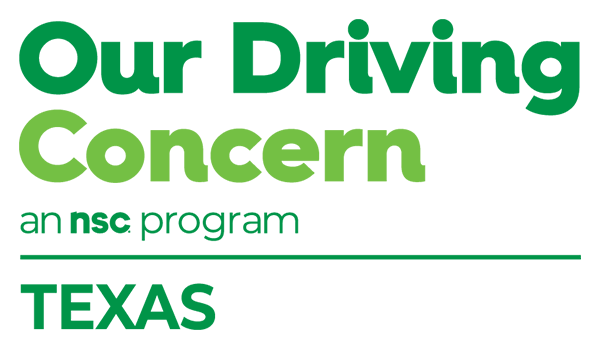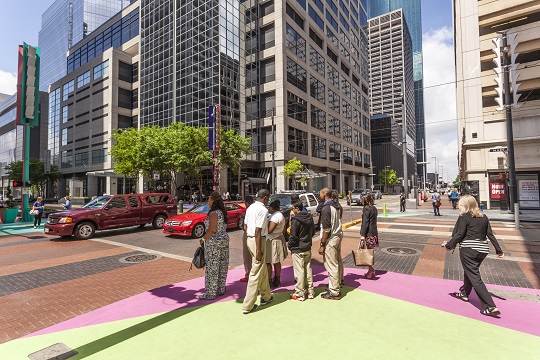Safety Coach
Safety Corner
How many of your employees leave the building during the lunch hour? In effect, they change caps, right? Your event planner becomes a pedestrian on a short walk through the parking lot. Likewise, your accountant becomes a pedestrian, and your machinist becomes a pedestrian.
If pedestrian safety is not included in your employee driver and transportation safety program, it should be. Here is why: Pedestrian fatalities are at the highest levels they have been in 30 years. In fact, pedestrian fatalities now account for one in five of all traffic fatalities in Texas. In 2019, there were 5,975 crashes involving pedestrians in Texas, resulting in 1,317 serious injuries and 669 deaths, a 5% increase in pedestrian fatalities over the previous year.
Pedestrian safety training covers the employee who is a pedestrian throughout the work day and those employees sharing the roadways with pedestrians, our most vulnerable road users.
Q: What should we know about pedestrian safety and traffic crash trends? How does this impact your workforce and your organization?
A: Several factors point to why we are seeing these disturbing trends. Increased speed and larger vehicles contribute significantly to the rate of injuries and fatalities. Drivers traveling at higher speeds require additional time to slow or stop for a person crossing their path, and higher speeds lead to a narrower field of vision. Emphasizing safe speeds and vigilance about speeding is a critical part of any safety training.
Research indicates the majority of fatal crashes involving pedestrians occur outside of intersections, at night and also involve alcohol-impairment by the driver and/or the pedestrian. One more factor: Distraction.
Walkers are distracted. Drivers are distracted. Both need to be fully engaged. Drivers need to put down that cup of coffee, stop fiddling with on-screen displays and just drive. Pedestrians need to pay attention to their surroundings as well. Employers who provide training to employees who are in and out of their vehicles all day, perhaps dropping packages on doorstops, protect their bottom line. The same goes for employers who commit to implementing and enforcing a safe driving policy that bans cellphone use while driving and those who provide training around distraction.
Q: What are the main types of driver/pedestrian distractions?
A: Let’s look at three:
- Visual (taking your eyes off the road or walkway)
- Manual (taking your hands off the wheel or scrolling through social media on your phone while walking)
- Cognitive (taking your mind off driving/walking)
Anything that takes your attention away from driving/walking/biking can be a distraction. Sending a text message, talking on a phone, using a navigation system or snacking on a bag of chips are a few ways you can be distracted. Any of these can endanger you, your passengers and others on the road. Remember: Pedestrians are road users.
Q: How can I easily include pedestrian safety in my safety program?
A: You can lead a brief safety talk and ask your employees: How often are you a pedestrian during a typical day? They will be engaged and perhaps somewhat surprised to hear the answers. Home health care workers, for example, get in and out of a vehicle multiple times in the course of a day. As the weather gets warmer, more of your employees will look for excuses to get outside. Lead them down a path toward safety with these tools:
- Ready-Made Safety Talk: Pedestrians
- Tips to Share: 10 Walking Safety Tips
- Videos to Watch: 1. Put Your Best Foot Forward, 2. If You Can’t Text and Walk, Why Would You Text and Drive? 3. Tired Faces, 4. If You Can’t Talk and Walk, Why Would You Talk and Drive?
Many employers offer step challenges as part of their health and wellness programs. As you roll out a new challenge, be sure to address pedestrian safety and sharing the roads. Everyone benefits.
Tailgate Talk
Lend a Hand
Many companies set participation goals for their annual health and safety fairs. They might look like this:
- Interact with employees and their family members to encourage health and wellness, which benefits the employee, family and workplace
- Build awareness of employee benefits and services that support employees and their families
- Educate employees and family members on injury prevention techniques, and how injuries can be devastating for families and costly for the employer
Crashes involving employees and their family members can impact your bottom line in a number of ways, including decreased production due to lost work days and increased costs for insurance premiums.
By providing free resources and educational materials that target teens and safe driving behaviors, you can support family safety and help alleviate a parent’s greatest concern. A teen’s biggest safety threat is sitting in the driveway – the car they drive to school or to the mall to hang out with friends. In fact, research indicates half of all teens will be involved in a car crash before graduating from high school.
Your health and safety committee can take advantage of DriveitHOME, a program created by the National Safety Council which supports caregivers of teens and shows them how to guide teens on a path to safety. This also can benefit an employer’s bottom line. Put these resources on your intranet, in an employee newsletter and in a central location at your workplace, and share in a safety meeting. Start with Pointers for Parents, which features lessons covering these topics:
You also can point caregivers of teens to the New Driver Deal, which addresses commonly asked questions such as:
- When can the car be used?
- Who will pay for gas and insurance?
- What are the rules around major driving risks, such as passengers and distractions?
Finally, get free resources to promote teen safe driving in your workplace, including posters, sample safety talks and social media videos.
Connecting with your employees through their family members is a great way to demonstrate how much you care about their health and wellbeing. Be sure to ask parents and caregivers at your safety fair what other items they would like to see included in the future to help prioritize road safety. Listen for feedback.
Spanish Posters
Hola! That’s me saying “hello” in Spanish. I must confess: I don’t know the language very well. But I do know many of you would like Spanish resources you can use to promote road and driver safety. On our new website, you will find a number of items in the Tools and Templates section. Just click on the Spanish Language Resources tab.
We’re also in the process of translating 14 of our English language traffic safety posters into Spanish. If you’d like us to send you the posters when they’re ready, email us at [email protected].
Safety is a universal language!


